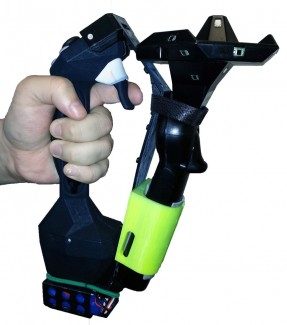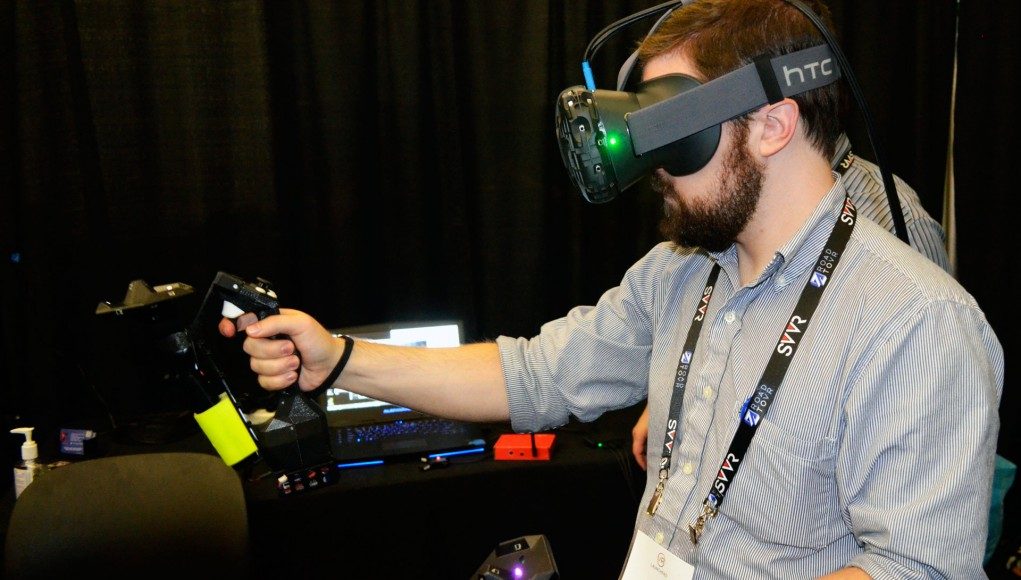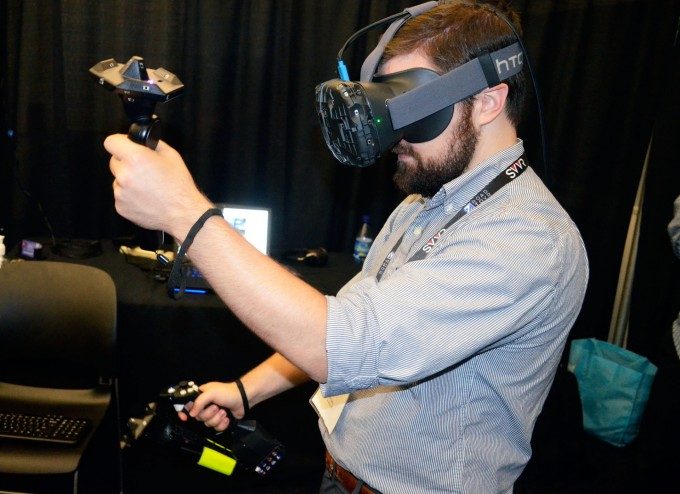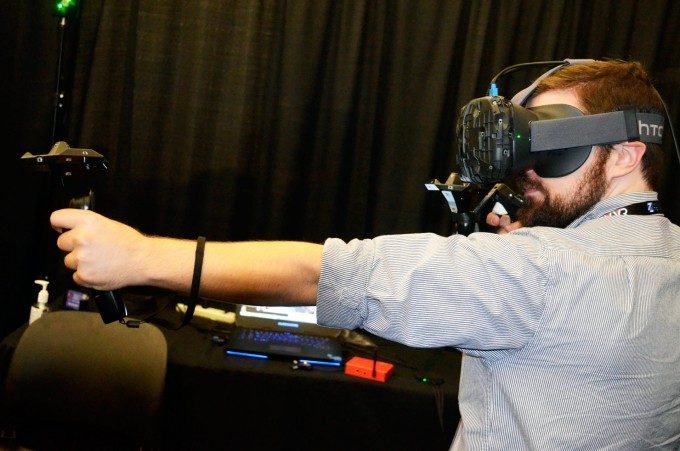While the latest generation of haptic feedback in controllers has come a long way since the days of N64’s ‘Rumble Pak’ add-on, it’s fundamentally based on the same principle: rumble. Whether it’s the ERM motors of days passed, or linear actuators thought to be used in next-gen VR devices like Oculus Touch and Vive controllers, rumble will only take you so far, but not far enough.
Tactical Haptics has been developing their ‘Reactive Grip’ haptic feedback system since 2013. I was impressed from the very first time I tried the system back at GDC 2013. The novel approach, which uses sliding bars to mimic the pressure felt against your palms while gripping an object, is a huge step up over mere rumble, and one of only a small number of practical haptic enhancements that’s more than just a concept.
This (old) video gives a solid glimpse of how the system works for those who have never had the fortune of trying it:
The system can create the sensation of holding virtual objects in a surprisingly convincing way by simulating the forces of the object against your hand as if you were really holding it.
Think about gripping a baseball bat in your hands. When the end of the bat feels a force against it, the force will travel along the length of the bat and exert against the hands, corresponding to the direction of the force. Imagine wielding a sword and stabbing it into a dummy; your palms will feel the force of the sword pushing downward in your grip as it experiences friction while piercing the dummy. Now think about spinning a flail above your head; your palms will feel forces from the handle moving circularly as the mass swings above you. Reactive Grip portrays forces surprisingly well… so well in fact that you often feel like there really is something in your hands beyond a controller.
At VR Launchpad last week (an event presented by SVVR and Road to VR), Tactical Haptics showed off the latest wireless version of their Reactive Grip system, for the first time hooked up to the HTC Vive’s controllers. This was the first time I was able to enjoy the feedback atop an input system of this fidelity; the accuracy and latency of which further highlights how much the extra haptic information adds to immersion.
 As a quick hack (until the doors open to building Lighthouse tracking directly into third-party peripherals), Tactical Haptics created a simple 3D printed attachment to mount the Vive controller to the wireless Reactive Grip controller.
As a quick hack (until the doors open to building Lighthouse tracking directly into third-party peripherals), Tactical Haptics created a simple 3D printed attachment to mount the Vive controller to the wireless Reactive Grip controller.
During demos of the system at VR Launchpad, the company strapped users into the HTC Vive headset and handed them one of the Reactive Grip controllers along with one of the normal Vive controllers in the other hand. Giving users a point of reference for what the experience was like with and without Reactive Grip clearly drove home how powerful the added feedback can be.
I ran through the company’s latest set of demos, including one of my favorites, the flail, which still does an impressive job of telling your brain that there’s a large mass swinging over your head as you swing it about. The gravity gun demo, which I had tried previously, though not in conjunction with the Vive, garnered new appreciation because of how it utilized the haptics for communication of abstract forces.
In the gravity gun demo you can reach out and remotely grab any box in front of you. Once tethered to the gravity gun, you can swing boxes back and forth and fling them in any direction if you build up the right momentum for your throw. The haptic feedback in this case doesn’t necessarily make you feel like you’re gripping a gravity gun that’s controlling mass (after all, who knows what that feels like?), but it effectively describes the momentum forces felt on the boxes as you whip them about the scene. Rumble, in this context, wouldn’t help to describe those forces at all.
Larger boxes have more mass and thus more momentum, causing a greater amplitude of force felt on your hand as you move the boxes about the scene. The feedback is essential for knowing how much force you’re exerting on the box, and is therefore really important to getting a solid toss. The demo scene I was standing in had a simple flat floor that extended in all directions around me but eventually stopped abruptly a few hundred yards away. I spent most of that demo trying to fling a box to the very edge. After getting a feel for the momentum, thanks to the feedback from the haptics, I nailed a perfect toss and just managed to get a box over the edge. This simple little goal I made for myself wasn’t even the intended goal of the demo and yet left me with a satisfied sense of control and accomplishment; it’s easy to see how this extra layer of feedback could be explored for new game mechanics.
While rumble effectively tells us when something is happening, and (with variable amplitude) how much it’s happening, it has no capacity to indicate the direction of forces, which is essential to feeling like you’re actually holding something. This additional layer of haptic feedback means that more information can be sent to the user about the forces felt on a virtual object.
A perfect haptic feedback system would be able to simulate all possible forces, including causing your hands to stop in mid-air when pressed up against something you can’t move (like a wall). And while Reactive Grip may not be perfect in that sense, it is a practical approach to adding another layer a haptics and immersion to the VR experience, and one that seems like a logical next step for deeper immersion.
Forced to choose between the two, I’d easily pick Reactive Grip over rumble, but ultimately the two compliment one another, especially if the rumble comes from the more modern linear actuator approach which is great for subtle clicking and tapping effects as well as the usual ‘dumb’ rumble that we associate with the ERM motor rumble common in modern-day gamepads.









